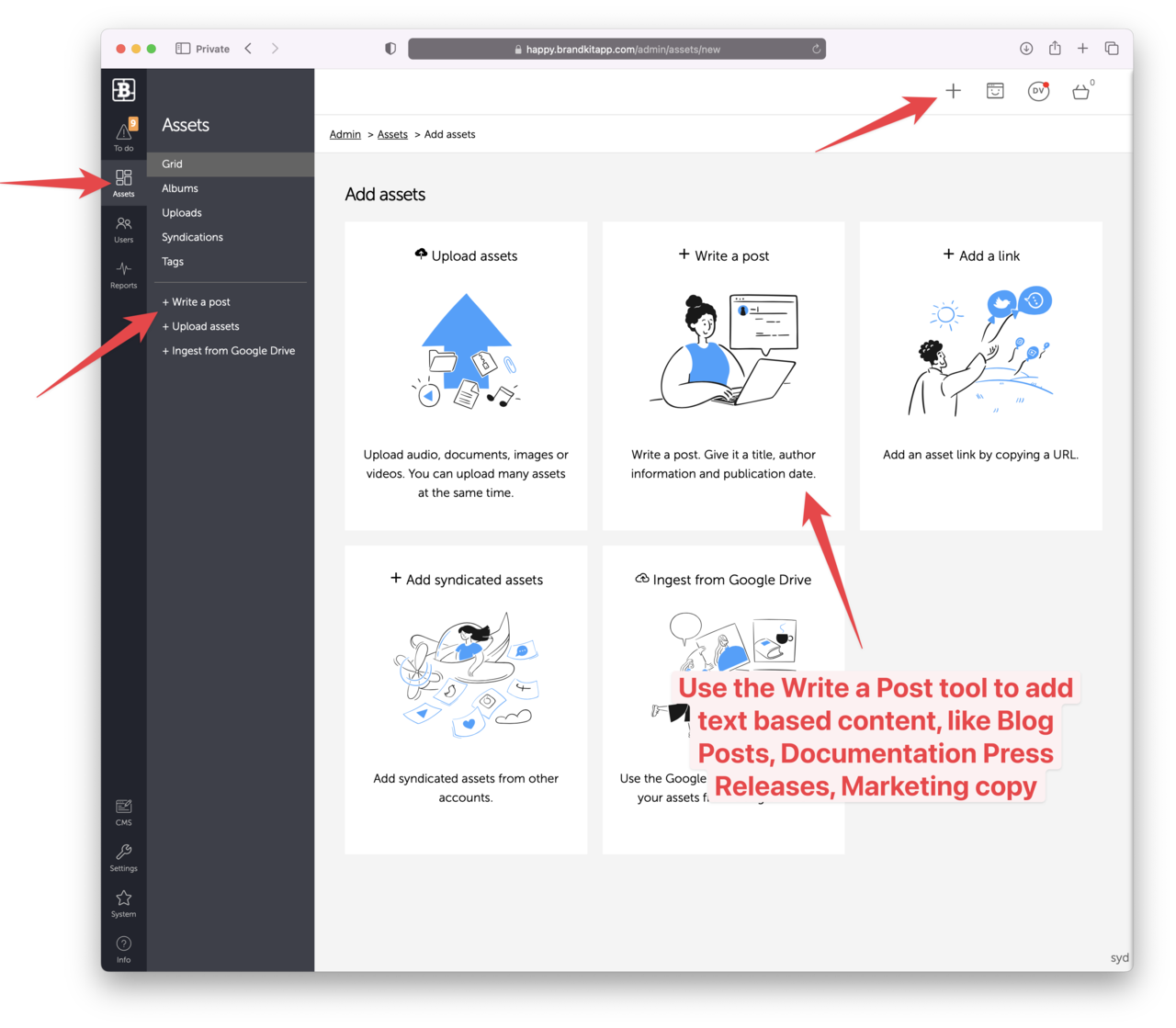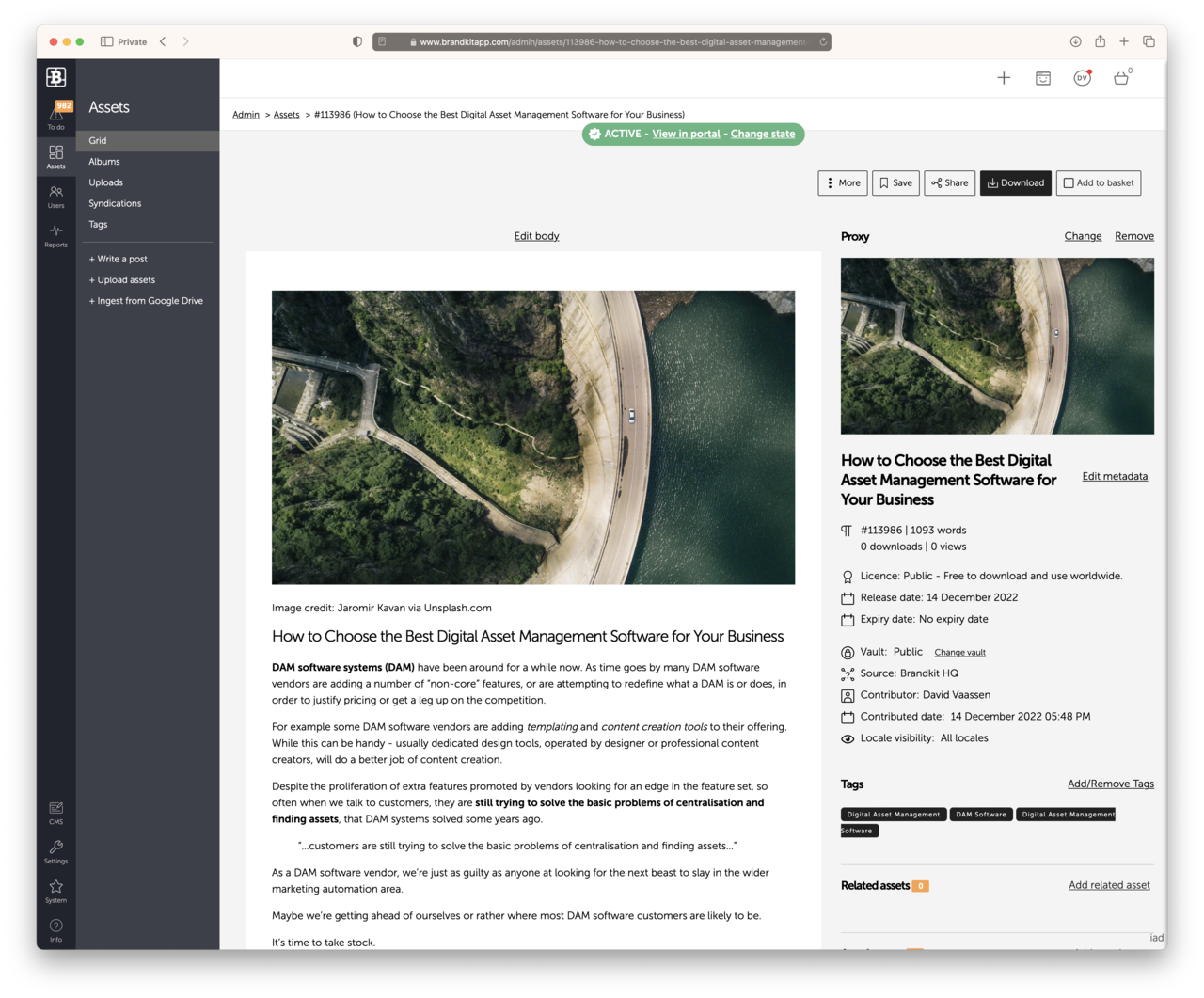Brandkit Platform Tour: Posts
Brandkit includes an integrated Blog/Media Center with Posts
Posts (such as Blogs, Press Releases, Stories, Marketing Copy, Documentation) can now be written natively in Brandkit™, and managed alongside uploaded files and links.
Essentially you can write a Post using a simple markdown editor.
These text based Posts are stored as Assets and behave just like other Assets with tags, licensing and other Asset attributes, making universal search possible.

A world first. Posts are now digital assets.
For the first time Posts are treated as digital assets alongside file based assets like images and video.
Posts in Brandkit® are writeable, editable, taggable, printable, downloadable, shareable, transferrable and searchable the same way file based digital assets are.
Brandkit® is the first DAM software to treat Posts as Digital Assets, like other file based assets. In Brandkit a Post is an Asset, an object in the Asset Database, rather than a web page. This has big advantages over a web page, because you get all the benefis of a DAM, like editability, licencing, like editable metadata, tagging, versioning, attachments, searchability and more.
The big advantage that Brandkit's approach has, is that we can surface written assets alongside images, video and other media assets in a single search result.
This is powerful.
Imagine you're a journalist looking for your content for a story. A single search for a topic, keyword or placename, can surface high res photography, a video, an infographic, a press release, a story idea, quotes, reviews - all in one search result. Saving everyone a lot of time, and delivering better ultimately better outcomes.
Assets, not Pages
Posts are different to "Pages", and are regarded as "Assets" in Brandkit. This means you write and edit Posts in the Assets tool. Bonus is that Posts are also Assets, and therefore searchable alongside visuals (images, video, graphics), have the same tags, have Licencing and other metadata shared with file based Assets. That said a Post is "content" and you can create and edit a Post anytime. Making our Post Editor a mini CMS - dedicated to Posts.

(Above) The Admin view of a Post
BTW This is a real Post - see it in the Brandkit Portal here.
Give credit where credit is due
Posts get Content Attribution too
Posts like file based assets, have authors and creators. So Posts have a Credit attribute just like file-based Assets do. And when you credit (give attribution to) an author in Posts, that Post and any other contenet that person/organisation contributes will be automatically gathered up and presented on a dedicated search page.
It's a super nice way to acknowledge your authors and creators, and say "Thank you for your contribution".

Learn more





